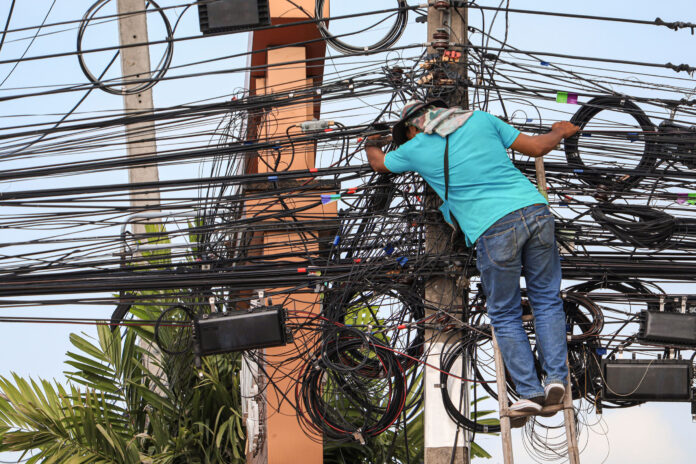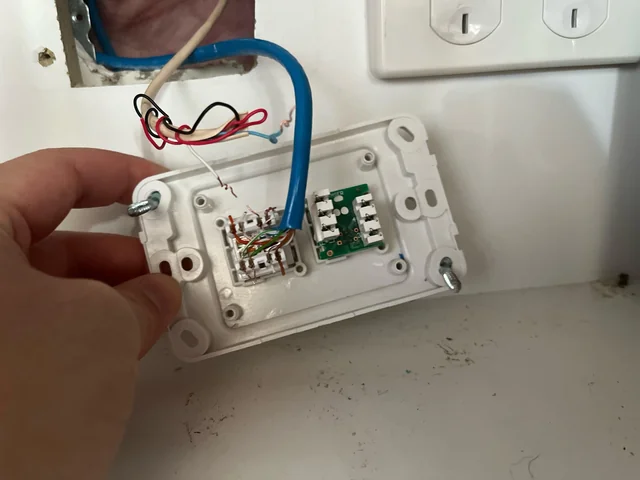When the NBN spouts about their latest and greatest services soon coming to your area, and you’ve been waiting for the service since 2008, then G.Fast (Gfast) might be the NBN alternative for you.
For all those users like myself who still don’t have access to an NBN Fibre to the Premises (FTTP) service – a solution has now arrived that is not only a respectable substitute but works in the delivery of decent high-speed WAN (internet) services to the home or office for those still unable to access fibre to your premises.
Working in the IT, security and even gaming industries, a high-speed internet service becomes a hugely important factor in maintaining a level of sanity when dealing with applications that require high speed and low latency, nothing of which can compare to an optic fibre service directly to your premises, i.e. Fibre to the Premises (FTTP).
I recall the excitement when it was announced in 2008 that the South Brisbane FTTP NBN testing area (known as the Telstra South Brisbane Fibre Network at the time, now sold to Telstra Velocity), was successful and the NBN was to be rolled out across the country, for each and every Australian who wanted high-speed internet.
Finally, Australia was to be elevated into the upper echelon of those supreme countries like Macau, Taiwan, Japan, and Singapore, all of which had fast internet services 10 years prior since 2000(1), while we battled the latency of an asymmetric digital subscriber line 1 (ADSL) trying to upload server ISO’s on 128kps.

Alas, it was not to be. Some small group of bureaucrats in the government at the time could not, would not, or refused to understand or take the time to learn the vast importance and immense positive impact such a technology would have on Australian consumers, businesses, and the country as a whole. Instead, 25 years later, many of us living in strata premises or apartments still cannot access the NBN.
How wrong the government was at the time! (2) In an effort to save costs, they effectively doubled/tripled the cost, causing unimaginable losses to the Australian economy and all against the better judgement of the majority of the Australian people.
Their solution was a travesty to mankind, justice and the technology world at large. After living for many years with the promise of super-fast internet (just like the rest of the modern and developing worlds), our expectations were raised to great heights like the flight path of a Concord, only to have them come crashing down and obliterated in the space of a few days.

The Real Loss
So what is the difference? Does it really matter? Let’s take a look at some of the standard benchmarks. The table below for the performance of FTTP vs FTTN/B vs Satellite.
| SERVICES | RESULTS |
|---|---|
| Promised Speed (FTTP) | 1000 Mbps |
| Latency – Ping Test (FTTP) | 2 ms |
| Jitter (FTTP) | 0 |
| Delivered Speed (FTTB/N) | 100 Mbps (at most) |
| Real Latency – Ping Test (FTTB/N) | 9 ms |
| Jitter (FTTB/N) | 0 |
| Delivered Speed (Starlink Sat) | 300 Mbps |
| Latency – Ping Test (Starlink Sat) | 55 ms |
| Jitter (Starlink Sat) | 4 ms |
Speed & Latency (3)
The answer is absolutely!
What is Fibre to the Basement (FTTB)
Let’s fast forward to 2024 and look at where we now stand in all this ruckus. A less than careful observation immediately reveals that much has been done in the past 5 years to bring Australia’s internet standards up to speed.
Many of the buildings in inner-city areas and even rural areas have now been given a promise of an FTTP service. The FTTP upgrade program (also known as Fibre Connect) is an initiative run by the NBN implemented early in 2024 and designed to provide customers with faster internet to support the growth in connected devices and increase the number of Australians working from home.
This was recently announced by the NBN and is excellent news for consumers and businesses on the last leg of a fibre install progressing in their street or suburb. We must say that, finally, things are starting to look a little up (after 20 years).
The Solution: G.fast
Thanks to recent developments in digital subscriber line (DSL) protocol standards, a new technology G.fast (Gfast) which has only become available in the past few weeks, is now available for those who cannot access FTTP.
Most importantly of all, it actually works!
Being in the IT industry, we were looking for a solution that could provide a decent high-speed service and came across a company Capti Networks Pty Ltd, who are one of the first to offer G.fast (Gfast) services to our local area (Artarmon, NSW).
At the time, we spoke to Capti engineers and management, who placed us on a waiting list for the service. Being sceptical at first, I was unsure how the service would perform or how long it would take to implement.
It turned out that the equipment for the service was already in place in the basement comms room of the apartment block, and we were told there was a short final wait for several small fibre runs to be completed before the service was activated.
Before the upgrade, we pulled the face plates off the wall and dug out the old Telstra shielded twisted pair (UTP) cables to cut and re-terminate as the current fittings were quite corroded. This just ensures maximum speed for a new service.
True to their word, the service was activated on time, and the technician arrived with the VDSL G.fast (Gfast) modem. Upon testing, we can vouch that the speeds are just super impressive for a DSL service. It rivals an nbn™ FTTP and only falls slightly short due to the expected latency. Our most recent speed test shows the following:
G.fast (Gfast) Result Link: https://www.speedtest.net/result/15992431771
Let’s look at the full results tested across various core services. The above test was completed cross-service from Capti to a Telstra backbone in the Equinix Data Centre. Please feel free to click on the image to enlarge.
Cost
Surprisingly, the cost of Gfast is reasonable. For the provider in question, we can note the following prices as of 11.03.2024:
Currently, we cannot compare the pricing to that of another provider due to the fact that no other G.fast (Gfast) providers are currently supplying services in NSW as of the date of this article writing.





